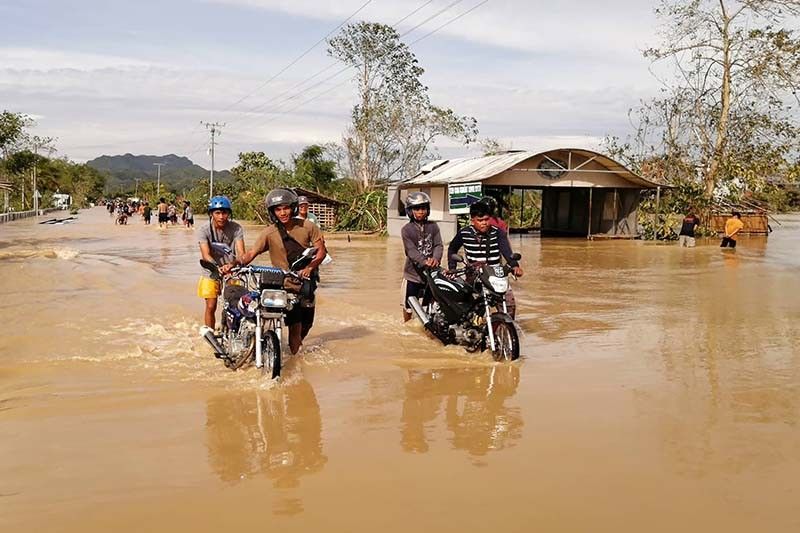Typhoon Ambo complicates Philippines' coronavirus response

MANILA, Philippines — The first typhoon to hit the Philippines this year is complicating government efforts to fight the coronavirus disease-2019 (COVID-19) pandemic.
While national and local officials said they prepared for any eventuality, typically cramped evacuation centers, some of which had been converted into isolation areas, are presenting a challenge for localities to enforce social distancing measures. Funding woes are also likely to surface in the long run.
State disaster officials are aware of the challenges and have instructed their local counterparts to “ensure no crowding and inspect sanitary and hygienic conditions in evacuation centers,” said Lorelei Bendijo, spokesperson for the National Disaster Risk Reduction and Management Coordinating Council.
The orders are meant to ensure the virus does not spread among families that will be displaced and housed in small public-school classrooms, which in the Philippines get converted into temporary shelters when a disaster strikes.
But for some local government units (LGUs), this is easier said than done. As weather forecasters project typhoon Ambo to hit Northern Samar Thursday afternoon, Rei Josiah Echano of the province’s disaster management office said his office is scrambling to find more evacuation centers to house “about 400,000” individuals expected to be displaced by the calamity.
“That’s why the governor pleaded to our DepEd (Department of Education) superintendent to consider allowing the use of all schools as evacuation centers,” Echano said in a phone interview.
In Eastern Samar, disaster officer Manuel Van Torrevillas said only 50% of the residents may be accommodated by existing evacuation sites to follow distancing measures. “The other 50% we would ask to relocate temporarily with their relatives who may have bigger and sturdy houses,” he said in a phone interview.
A shortage in evacuation sites is expected as 117 of them were designated and converted by the government as isolation facilities for COVID-19 patients. As of May 8, 71 of these centers are “already being utilized for such purposes,” President Duterte said on his report to Congress on Monday.
Money issues
But that is not the only problem. Over at the budget department, data showed that the national government only has P1.73 billion in calamity funds left unreleased to agencies as of April. These are lump-sum allocations meant as immediate funding source for relief.
In total, the government had around P13.9 billion in calamity funds at the start of the year, but around P3.3 billion of these was specifically earmarked for the rehabilitation of war-torn Marawi City. The rest of the funds were already spent or released, including for COVID-19 response after President Duterte declared a state of national calamity, a precondition for fund use.
Even Republic Act No. 11469, which allows the president to reallocate funds, cannot help ease the budget crunch since the law only allows realignment if money will be used for COVID-19. Budget Undersecretary Laura Pascua said the quick response funds (QRFs) included under each agency budget would be the fastest resort for funding during the typhoon.
“The QRFs are replenished as soon as the agencies deplete them,” she said in a text message, without citing figures.
Unfortunately, cash-strapped local governments do not have the same recourse. “Most of our component municipalities are a bit depleted in terms of resources because they already exhausted cash on COVID-19 emergency operations. So we are on standby mode to augment the resources of our LGUs if they will be hardly hit by this typhoon,” Echano said.
Sought for comment, Angelo Kairos de la Cruz, associate for climate policy at the Institute for Climate and Sustainable Cities, a non-government organization, said the upcoming typhoon season come August would worsen “massive inequality and vulnerability” among people already underscored by the pandemic.
“We often hear that Filipinos are resilient. I agree that we are but if we do not resolve these challenges, it will hurt even our capacity to adapt to future shocks,” he said by phone. — with Prinz Magtulis
- Latest
- Trending






























